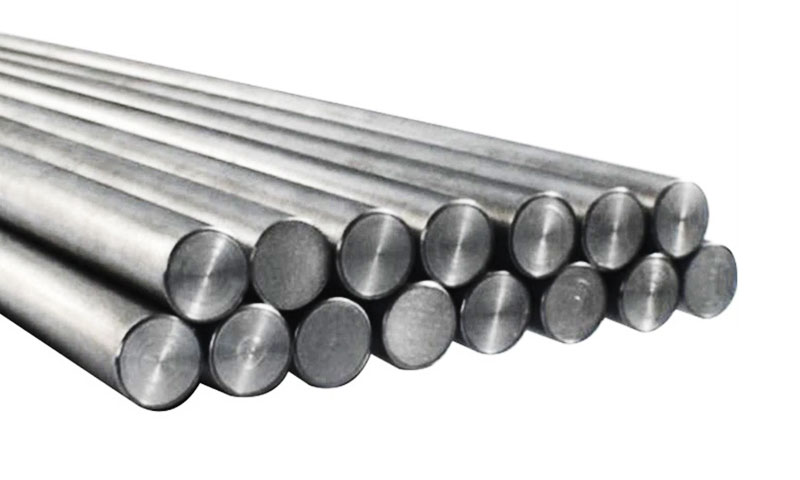1. Увођење
Нас S20910 (commonly marketed as Нитронски 50 или XM-19) and UNS S21800 (commonly marketed as Нитронски 60 или Легура 218) are advanced austenitic нехрђајући челичан engineered for demanding service.
Both deliver better performance than conventional 300-series grades, but they are optimized for different priorities:
- S20910 (Нитронски 50) је а отпоран на корозију, nitrogen-strengthened austenitic stainless optimized for high corrosion resistance (including sour service), добра снага, Одлична жилавост (including cryogenic), и добра заваривост.
It is often specified where resistance to pitting, SCC and low-temperature toughness are required together with reasonable strength. - S21800 (Нитронски 60) is formulated primarily for wear and galling resistance while retaining corrosion resistance typical of austenitics.
It contains high silicon and manganese for tribological performance and is selected where sliding contact, жаљење, and high wear are the dominant failure modes.
This article compares composition, mechanical and corrosion behaviour, измишљотина, and real-world application trade-offs so you can select the right alloy for a specific component or environment.
2. What Is UNS S20910 (Нитронски 50)
Нас S20910, уобичајено познати Нитронски 50 или XM-19, је а high-performance nitrogen-strengthened austenitic stainless steel.
It is engineered to deliver a combination of Одлична отпорност на корозију, велика снага, дуктилност, и жилавост, including at cryogenic temperatures.
These attributes make it well-suited for demanding industrial applications such as chemical processing, Поморска окружења, and sour-service conditions.
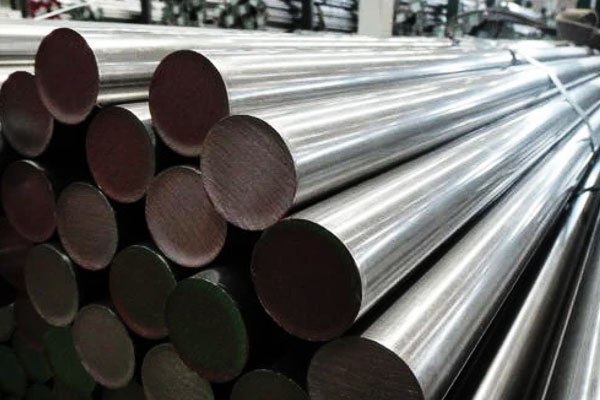
Key material designations and specifications укључити:
- АСТМ А276 / А479 (as XM-19)
- UNS S20910
- Од 1.3964
Primary characteristics of UNS S20910 (Нитронски 50):
- Отпорност на корозију: Enhanced by increased chromium, молибден, и садржај азота; highly resistant to pitting and crevice corrosion in chloride environments.
- Механичка чврстоћа: Stronger than conventional 300-series stainless steels, with excellent yield and tensile properties.
- Ductility and toughness: Maintains performance at both elevated and cryogenic temperatures.
- Fabrication and weldability: Can be machined, формиран, and welded with conventional techniques; solution annealing restores ductility after cold working.
- Nitrogen-strengthened: Nitrogen addition increases yield strength and contributes to pitting resistance without compromising austenitic ductility.
- Application suitability: Listed in Наце МР0175 for sour service, suitable for marine hardware, опрема за хемијску процену, Компоненте под притиском, and structural applications requiring corrosion resistance and mechanical performance.
3. What Is UNS S21800 (Нитронски 60)
Нас S21800, обично се назива Нитронски 60 или Легура 218, је а high-performance austenitic stainless steel designed primarily for wear and galling resistance, while maintaining good corrosion performance typical of austenitics.
Its specialized composition makes it ideal for applications where sliding contact, лепак, and high surface stress are primary concerns.
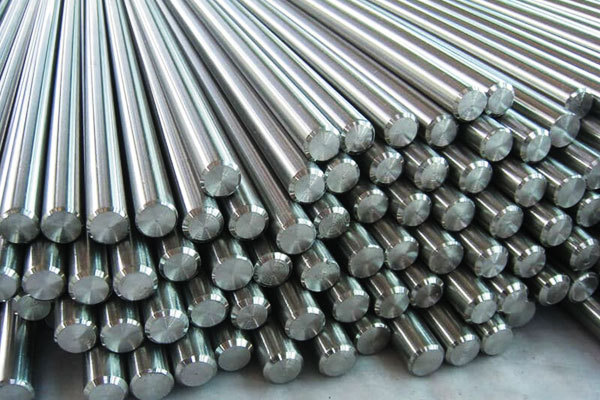
Key material designations and specifications include:
- АСТМ А276 / А479 (for bars, шипке, and other wrought forms)
- UNS S21800
Primary characteristics of UNS S21800 (Нитронски 60):
- Wear and galling resistance: Elevated manganese and silicon content, combined with a nitrogen-strengthened austenitic matrix, provides superior resistance to жаљење, лепак, and surface seizure.
- Отпорност на корозију: While not as corrosion-resistant as Nitronic 50 in highly aggressive chloride environments, то нуди Добра општа отпорност на корозију suitable for moderate chemical and marine exposures.
- Механичка чврстоћа: Exhibits high strength in both annealed and cold-worked conditions, with excellent surface hardness after work hardening.
- Fabrication and welding: Can be welded and fabricated using standard methods, though its higher silicon and manganese content may require adjustments in welding filler selection and machining parameters.
- Application suitability: Обично се користи за Стабљике вентила, причвршћивачи, Осовине пумпе, bearing surfaces, and other components subjected to repeated sliding contact or wear-intensive service.
4. Typical Chemical Compositions and Alloying Differences
A critical factor distinguishing UNS S20910 (Нитронски 50) and UNS S21800 (Нитронски 60) is their alloying strategy, which directly influences corrosion resistance, механичка чврстоћа, wear behavior, and fabrication characteristics.
While both are nitrogen-strengthened austenitic stainless steels, they are optimized for different service priorities.
Representative Chemical Compositions (вт%) and Performance Role
| Елемент | UNS S20910 (Нитронски 50) | UNS S21800 (Нитронски 60) | Key Role in Performance |
| Угљеник (Ц) | ≤ 0.06 | ≤ 0.10 | Controls strength, limits carbide formation; low C improves corrosion resistance and weldability |
| Хром (ЦР) | 20–23 | 16-18 | Primary contributor to corrosion resistance; higher Cr in S20910 increases PREN |
| Никл (У) | 11-14 | 8-9 | Аустенитни стабилизатор; побољшава жилавост и дуктилност; higher Ni in S20910 supports cryogenic performance |
| Манган (Мн) | 5-6 | 8-9 | Increases work-hardening and galling resistance; high Mn in S21800 aids wear performance |
| Силицијум (И) | ≤ 0.5 | 3.5-4.5 | Improves oxidation and wear resistance; higher Si in S21800 supports galling resistance |
| Молибден (Мо) | 1.5-3 | Није наведено / траг | Појачава отпорност на корозију са корозијом и креветићом; present in S20910 to resist chlorides |
| Азот (Н) | 0.10-0.20 | 0.08–0.18 | Strengthens austenitic matrix; Побољшава отпорност на корозију; supports wear resistance in S21800 |
| Iron (Фе) | Равнотежа | Равнотежа | Матрични елемент; balances alloying; provides basic austenitic structure |
Interpretation: S20910 emphasizes ЦР + У + Мо + Н (classic austenitic corrosion alloying with nitrogen strengthening and Mo for pitting resistance).
S21800 trades some chromium and nickel for elevated silicon and manganese, which improve hardness, wear and galling resistance.
4. Mechanical Properties and Temperature Behaviour
Нас S20910 (Нитронски 50) and UNS S21800 (Нитронски 60) exhibit distinct mechanical profiles reflecting their alloying strategies.
Кључна механичка својства
| Имовина | UNS S20910 (Нитронски 50) | UNS S21800 (Нитронски 60) | Practical Implication |
| 0.2% Снага приноса (МПА) | 350-420 | 320-380 | S20910 offers higher baseline strength for corrosion-critical applications; S21800 gains strength via work hardening |
| Затезна чврстоћа (МПА) | 650-750 | 600-700 | S20910 provides slightly higher ultimate strength; S21800 maintains adequate tensile strength with wear focus |
| Издужење (%) | 30-45 | 25-40 | S20910 maintains excellent ductility; S21800 is slightly less ductile but sufficient for forming/fabrication |
| Тврдоћа (Хрб / ХРЦ) | HRB ~85 typical annealed | HRB ~85, can be higher with work hardening | S21800’s higher Mn/Si allows superior surface hardness after cold work, enhancing galling resistance |
| Жилавост (J at room temp) | Одличан; retains toughness at cryogenic temps (-196° Ц) | Добри; slightly lower than S20910 in cryogenic applications | S20910 preferred in low-temperature or highly dynamic loading applications |
| Elevated Temperature Performance | Good up to ~600–700°C | Reasonable; high Si improves oxidation resistance at moderate temperatures | S20910 favored for high-temperature corrosion exposure; S21800 for wear-exposed high-temperature components |
Temperature Behaviour
- Cryogenic Performance:
S20910 retains ~90% of impact energy at liquid helium temperatures, making it suitable for LNG storage, cryogenic piping, и Аероспаце апликације.
S21800 retains reasonable toughness but is not optimized for extreme low temperatures. - Повишене перформансе температуре:
Both alloys maintain dimensional stability and strength at moderate elevated temperatures.
Nitronic 50’s Mo content provides additional resistance to high-temperature corrosion, while Nitronic 60’s high Si content improves oxidation resistance in sliding-contact applications. - Отврдњавање:
Both alloys are austenitic and work-hardening, meaning mechanical properties, especially hardness and yield strength, can be increased via cold working.
S21800 benefits most due to high Mn and Si, improving wear and galling performance.
5. Corrosion Resistance and Pitting Resistance (Дрва)
Еквивалентни број отпора за копирање (Дрва) is a useful indicator of resistance to chloride pitting; it’s calculated from Cr, Mo and N content (simplified form: PREN ≈ Cr + 3.3× МО + 16× н).
- Нитронски 50 (S20910) — higher Cr, Mo and N yield PREN values in the low-to-mid 30s (typical engineering figure ≈ ~34).
That places it well above 316L (PREN ≈ 20–25) and makes it suitable for many chloride-bearing environments, including some marine and sour service (it is commonly accepted for NACE MR0175 qualifying in many conditions—verify certificate). - Нитронски 60 (S21800) — because Mo is typically absent and Cr is lower, PREN is нижи (typical mid-20s or less depending on exact chemistry).
While S21800 resists general corrosion reasonably well, то је не chosen primarily for pitting resistance; уместо тога, it is used where galling and wear are primary concerns.
6. Носити, galling and tribological performance
- Нитронски 60 (S21800) је пројектован за galling resistance and sliding wear.
High silicon and manganese, combined with work-hardening capacity, produce a surface that resists adhesive wear and metal-to-metal seizure.
Typical uses include valve stems, седишта, причвршћивачи, and pump components where repeated sliding contact occurs. - Нитронски 50 (S20910) нуди Добра отпорност на хабање, but its primary strengths are corrosion resistance and toughness rather than optimized galling resistance.
It is sometimes used in wear applications where corrosion control is also required, but for extreme galling environments S21800 usually outperforms it.
7. Измишљотина, welding and heat-treatment considerations
Завабилност
- Both alloys are заварив by standard processes (Камен, MIG, Размазати).
- S20910 (higher Ni/N) is highly weldable and retains corrosion resistance after welding when proper procedures and filler metals are used.
Low carbon and stabilized practices can minimize sensitization risk. - S21800 requires attention to heat input and filler selection because its high Si and Mn can influence weld metal composition; preheat/post-weld heat treatment practices depend on component size and code requirements.
Forming and machining
- Both are очвршћавање austenitics; S21800’s higher Si/Mn can make cutting more challenging—tooling and speeds need adjustment.
S20910 in solution-annealed condition is generally easier to machine/form.
Топлотни третман
- These are austentic alloys—strength is primarily from cold working and alloying; full hardening by quench/tempering is not applicable.
Solution annealing can restore ductility and corrosion resistance (typical anneal ~1000–1100 °C followed by rapid cooling).
Hydrogen/sour service
- S20910’s chemistry and listing in some sour-service guidance make it suitable for H₂S environments (verify NACE/ISO certifications).
For sour service weld procedures and hardness limits (HRC thresholds) are normally enforced.
8. Applications of UNS S20910 vs UNS S21800 Austenitic Stainless Steel
The distinct alloying strategies, механичка својства, and corrosion/wear characteristics of UNS S20910 (Нитронски 50) и UNS S21800 (Нитронски 60) define their suitability across different industrial applications.
Applications of UNS S20910 (Нитронски 50)
UNS S20910 is engineered for Висока отпорност на корозију, Одлична жилавост, и добра заваривост, making it ideal for environments where both corrosion and mechanical performance су критични.
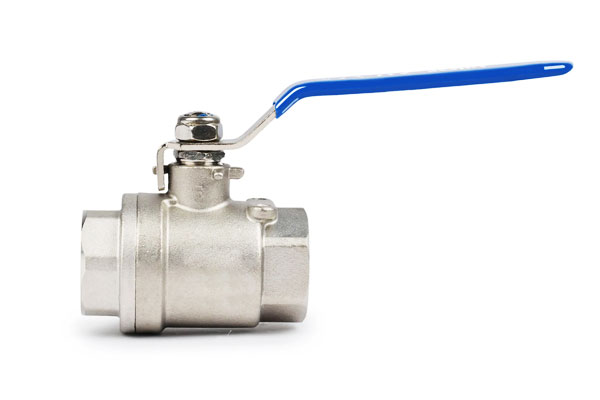
| Индустрија / Сектор | Типичне апликације | Key Performance Requirement |
| Маринац & На одбору | Seawater fittings, Осовине пумпе, причвршћивачи, вентили | Отпорност на високу хлориду, prevention of pitting/crevice corrosion |
| Хемијски & Процесна опрема | Измењивачи топлоте, реактори, цевовод, резервоари | Resistance to acids, хлориди, and sour service (Изложеност Х₂С-у) |
| Криогене апликације | LNG storage and transfer piping, cryogenic valves | Retains toughness at extremely low temperatures (-196° Ц) |
| Ваздухопловство | Fuel lines, cryogenic components | Велика снага, отпорност на корозију, low-temperature ductility |
| Енергија & Моћ | Boiler components, turbine parts in corrosive environments | Combination of corrosion resistance and mechanical integrity |
Applications of UNS S21800 (Нитронски 60)
UNS S21800 is optimized for galling and wear resistance while maintaining reasonable corrosion performance.
It is ideal for mechanical components subjected to sliding, adhesive contact, or high surface stress.
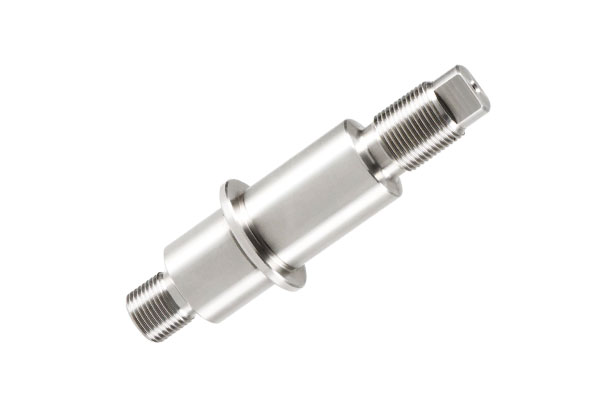
| Индустрија / Сектор | Типичне апликације | Key Performance Requirement |
| Вентил & Pump Industry | Стабљике вентила, седишта, Осовине пумпе, причвршћивачи | High resistance to galling, клизни хабање, adhesive seizure |
| Индустриал Мацхинери | Лежајеви, чашица, high-wear mating surfaces | Тврдоћа површине, work-hardening capability, ниско трење |
| Аутомотиве & Тешка опрема | Причвршћивачи, high-wear components, актуатори | Galling prevention, durability under repeated sliding or contact |
| Марине апликације | Deck hardware, mechanical joints | Moderate corrosion resistance with high wear/galling protection |
| Хемијска обрада | Mixer shafts, agitator blades | Wear-resistant components where moderate corrosion occurs |
Application Guidance
- Choose UNS S20910 when the primary concern is corrosion resistance in aggressive or sour environments, especially when toughness, завабилност, and low-temperature performance are required.
- Choose UNS S21800 when жаљење, носити, and sliding contact dominate failure modes, even if corrosion resistance is less critical.
- In complex assemblies, hybrid designs can leverage both alloys—using S20910 for corrosion-critical parts and S21800 for high-wear mating surfaces.
Surface engineering such as превлаке, нитрирање, or PVD treatments can further extend service life when combined with these alloys.
9. Direct Comparison Table: UNS S20910 vs UNS S21800
| Значајка / Имовина | UNS S20910 (Нитронски 50) | UNS S21800 (Нитронски 60) | Practical Implication |
| Primary Focus | Отпорност на корозију, жилавост | Wear/galling resistance, тврдоћа површине | Guides selection based on environment and mechanical stress |
| Снага приноса (МПА) | 350-420 | 320-380 | S20910 has higher baseline strength; S21800 can achieve higher surface hardness via cold work |
| Затезна чврстоћа (МПА) | 650-750 | 600-700 | S20910 slightly higher; S21800 optimized for wear resistance rather than ultimate strength |
| Издужење (%) | 30-45 | 25-40 | S20910 more ductile; S21800 slightly less but adequate for fabrication |
| Тврдоћа (Хрб / ХРЦ) | HRB ~85 typical annealed | HRB ~85, can increase with work hardening | S21800 better for galling and surface wear applications |
| Жилавост | Одличан; retains cryogenic performance | Добри; lower at cryogenic temperatures | S20910 preferred in low-temperature or dynamic loading environments |
| Отпорност на корозију | Веома висок | Умерен | Guides alloy choice in chemical, маринац, or sour-service applications |
| Носити / Galling Resistance | Умерен | Веома висок | S21800 is the preferred option for moving parts, Стабљике вентила, и причвршћивачи |
| Измишљотина & Заваривање | Одличан; solution annealed or strain-hardened | Добри; requires consideration for welding filler and machining parameters | S20910 easier to fabricate in complex geometries; S21800 may require tooling adjustments |
| Максимална температура сервиса | ~900°C | ~750°C | S20910 suitable for higher temperature corrosion exposure; S21800 for wear-exposed moderate temperatures |
| Дрва (Еквивалентни број отпора за копирање) | ~34 | ~23.4 | S20910 provides superior resistance to pitting and crevice corrosion, посебно у |
10. Закључак
Нас S20910 вс S21800 are complementary alloys within the Nitronic family.
Pick S20910 where corrosion resistance (especially pitting/crevice and sour service) plus toughness and weldability are paramount.
Pick S21800 where galling and wear dominate and corrosion is a secondary concern.
In many real applications the optimum solution is a combination—design the system so each part sees the alloy best suited to its dominant failure mode, or apply surface engineering to extend service life.
Често постављана питања
Are UNS S20910 and S21800 magnetic?
No—both are fully austenitic (or near-fully austenitic) У жаруљеном стању, with magnetic permeability <1.005 (ASTM A342). Cold working may induce weak magnetism, but this is reversible via annealing.
Can I weld S21800 with standard stainless fillers?
Да, but select fillers and procedures to accommodate S21800’s high Si/Mn chemistry—consult welding procedure specifications and filler supplier guidance.
Which alloy resists sulfide stress cracking (Скривен)?
S20910 is commonly accepted for many SSC environments and is used in NACE-subject applications; verify specific NACE/ISO certification and hardness limits.
Is Nitronic 60 (S21800) suitable for seawater?
It has reasonable general corrosion resistance in seawater but lacks the pitting resistance of Nitronic 50 or Mo-bearing grades; if seawater pitting is critical, choose S20910 or a higher PREN alloy.
Can either alloy be heat-treated to increase strength?
These austenitic alloys gain strength mainly by хладан рад and alloying; conventional quench/temper treatments are not used to significantly increase strength. Solution annealing restores ductility/corrosion resistance.
